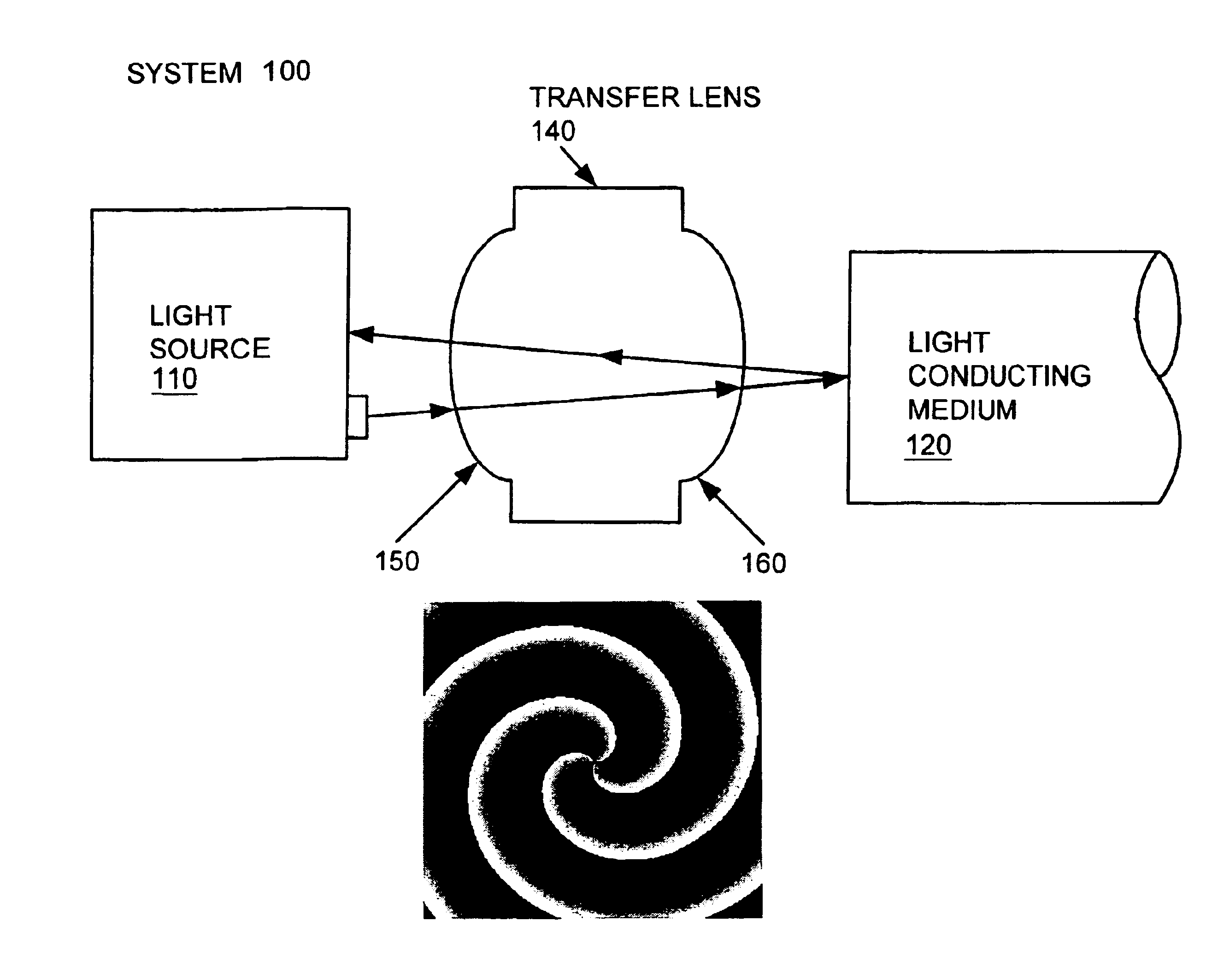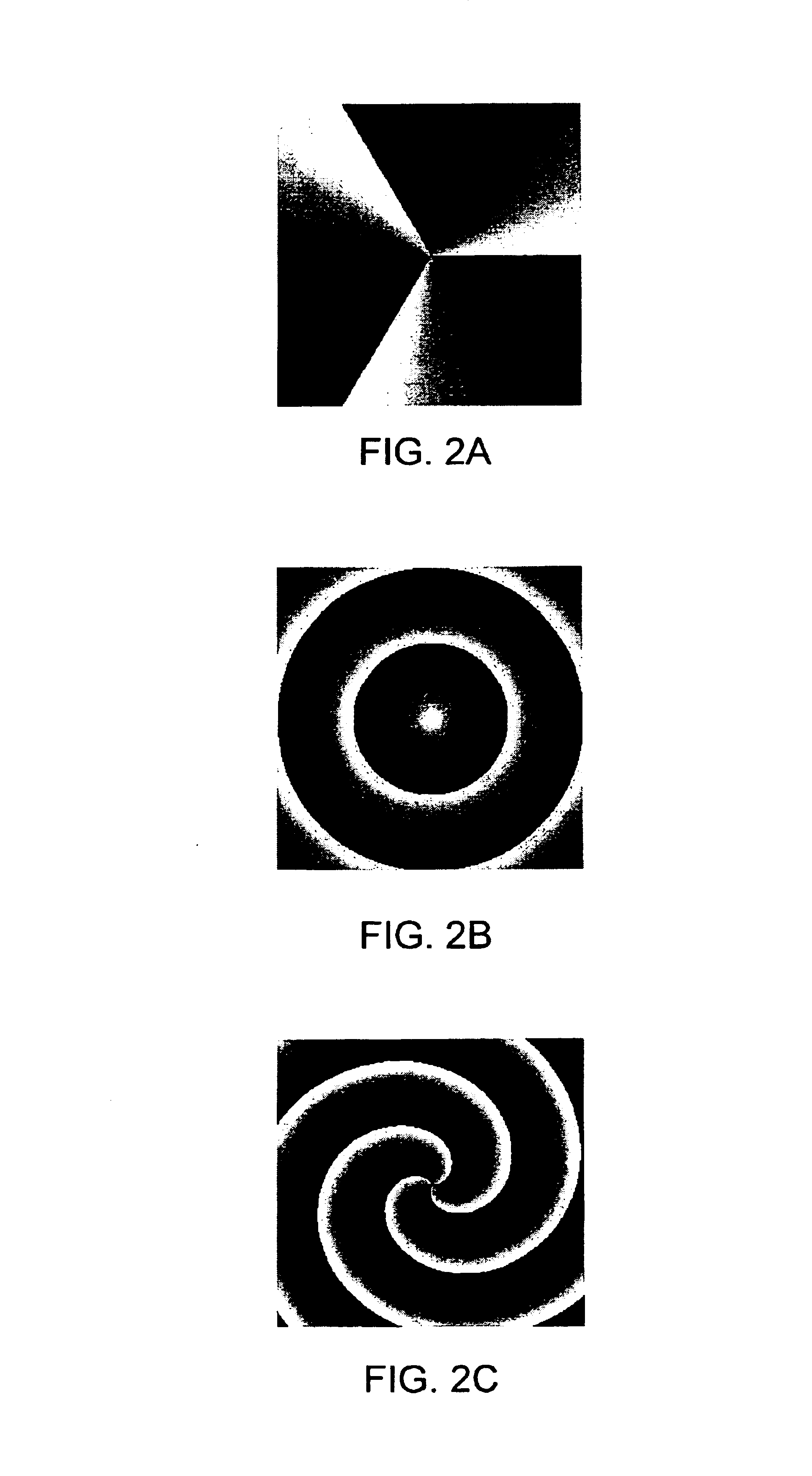Diffractive optical element for providing favorable multi-mode fiber launch and reflection management
a multi-mode fiber and diffractive technology, applied in the field of optical elements, can solve the problems of laser source instability, laser destabilization, and may operate with a noisy output signal, and achieve the effect of avoiding index anomalies and favorable launch conditions
- Summary
- Abstract
- Description
- Claims
- Application Information
AI Technical Summary
Benefits of technology
Problems solved by technology
Method used
Image
Examples
embodiment
Preferred Embodiment
Preferably, the design of the diffractive element of the present invention includes at least two phase functions (i.e., the first phase function having angular symmetry combined with the second phase function having radial symmetry) described above.
Describe the phase, φ, of all points within the lens aperture with polar coordinates: ρ,θ, where ρ is the distance of the point from the center of the aperture, and θ is the angle of the point from the x-axis.
In the preferred embodiment, the surface function of the diffractive element of the present invention includes at least a first phase function having angular symmetry (e.g., a spiral phase function) combined with a second phase function having radial symmetry (e.g., a cone phase function). For example, the surface function can be expressed as follows:
φ=mS*θ+2πmC*ρ.
The spiral phase function can be expressed as follows:
φ=mS*θwhere ‘mS’ is a real number, −INF to +INF, that describes how fast the phase changes as one ...
PUM
 Login to View More
Login to View More Abstract
Description
Claims
Application Information
 Login to View More
Login to View More - R&D
- Intellectual Property
- Life Sciences
- Materials
- Tech Scout
- Unparalleled Data Quality
- Higher Quality Content
- 60% Fewer Hallucinations
Browse by: Latest US Patents, China's latest patents, Technical Efficacy Thesaurus, Application Domain, Technology Topic, Popular Technical Reports.
© 2025 PatSnap. All rights reserved.Legal|Privacy policy|Modern Slavery Act Transparency Statement|Sitemap|About US| Contact US: help@patsnap.com



